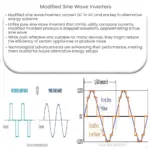Introduction to the Colpitts Oscillator
The Colpitts oscillator is an electronic oscillator that generates a sine wave output across a wide range of frequencies. It is named after its inventor, Edwin Colpitts, who first described it in a patent application in 1918. The Colpitts oscillator is widely used in many electronic devices, including radios, communication equipment, and test and measurement instruments.
The Colpitts oscillator is a type of LC oscillator, where the oscillator circuit is made up of an inductor and a capacitor in parallel. It uses a feedback mechanism to create a continuous oscillation of the input signal. The oscillator circuit requires an active component such as a transistor, vacuum tube, or operational amplifier (op-amp) to amplify the signal and maintain the oscillation.
How the Colpitts Oscillator Works
The Colpitts oscillator works by using an LC circuit to generate a feedback signal that keeps the oscillator circuit oscillating. The LC circuit consists of an inductor and two capacitors in parallel. The output signal from the LC circuit is fed back into the input of the amplifier, where it is amplified and fed back into the LC circuit. This creates a positive feedback loop that keeps the oscillator oscillating.
The frequency of the oscillator can be adjusted by varying the values of the inductor and capacitors. By changing the values of the capacitors, the resonant frequency of the LC circuit can be adjusted. This, in turn, changes the frequency of the oscillator. The Colpitts oscillator can generate a wide range of frequencies, from a few kilohertz to several megahertz.
Advantages and Disadvantages of the Colpitts Oscillator
One advantage of the Colpitts oscillator is that it can generate a sine wave output with a low distortion. This makes it suitable for use in applications where a low-distortion waveform is required. The Colpitts oscillator is also easy to design and implement, making it a popular choice for many electronic circuits.
However, the Colpitts oscillator has some disadvantages. It can be sensitive to changes in external factors such as temperature, humidity, and power supply voltage. This can affect the stability of the oscillator, making it less suitable for applications where a stable output frequency is required. Additionally, the Colpitts oscillator can have a high phase noise, which can affect the accuracy of the output signal.
Example Applications of the Colpitts Oscillator
The Colpitts oscillator is widely used in many electronic devices, including radios, communication equipment, and test and measurement instruments. It is used in radio frequency (RF) applications, where a stable and low-distortion sine wave is required. The Colpitts oscillator is also used in frequency synthesizers, where it is used to generate a precise output frequency.
Another application of the Colpitts oscillator is in signal generators and function generators. These devices use the oscillator to generate a precise and stable sine wave output. The oscillator is also used in phase-locked loops (PLLs), where it is used to generate a stable reference frequency. PLLs are used in many electronic devices, including audio equipment, telecommunications equipment, and computer peripherals.



